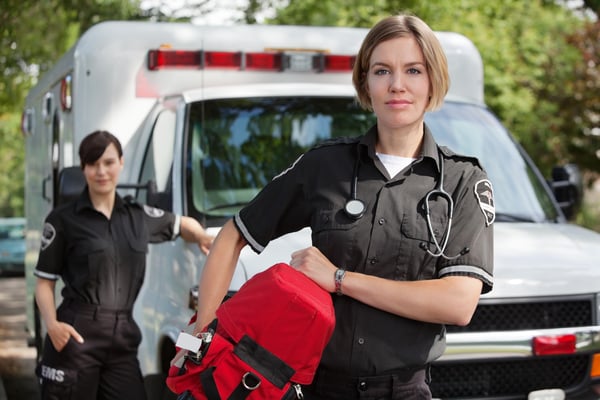
It’s winter, and the cold presents unique challenges to first responders. If you didn’t do it this year, take the time now and before next winter to take stock of your equipment and winterize your first responder kit. Here are five the steps to take:
Be Prepared for Common Winter Emergencies
Spend some time brushing up on common winter medical emergencies. Each geographic region presents its challenges. Northern regions have an increased risk of snow and ice-related issues, while the South presents unique challenges to drivers unaccustomed to driving in icy conditions.
Here are some of the most common winter medical emergencies, and the steps you can take to prepare your kit:
- Respiratory infections, including the flu, colds, Covid-19 and RSV. Have a portable emergency suction device ready to clear the airway.
- Choking on holiday presents, tiny decorations, and other small objects. When children spend more time indoors, they sometimes devise creatively dangerous ways to pass the time. Have a portable suction machine ready to save children’s lives.
- Head injuries and falls. Slippery conditions can increase the risk of falls and head trauma. Be prepared to move people who have suffered a recent injury.
Equally important is the ability to promptly address respiratory complications following head and spinal cord injuries. A portable emergency suction machine ensures you can go to the patient, rather than attempting to move them.
Stay Warm
Cold weather can make it difficult to work, particularly when temperatures drop below freezing. Invest in equipment that makes it easy to continue saving lives, even when temperatures are frigid. Consider including the following in your bag:
- Warm gloves that aren’t to thick to easily tend to patients. Gloves with removable fingers can be especially helpful.
- Hand and foot warmers. Keep them in your pockets to warm your hands before working on a patient.
- A warm, thick jacket and hat. If you’re distracted by the cold, you’ll be less adept at tending to patients.
Protect Patients from the Elements
Frigid temperatures can exacerbate other injuries and put patients at risk of hypothermia. Always check patients for signs of hypothermia. Even if a patient seems fine, a few extra minutes in freezing temperatures can be harmful.
It’s important also to pack:
- An emergency warming blanket.
- An additional blanket or coat to warm a patient who can’t be moved.
- Backup hand and foot warmers.
- Socks.
- Scissors. If temperatures are very cold, it can be difficult or impossible to remove a patient’s clothes without injuring them. Scissors can save lives and expedite treatment.
Your agency should have a clear plan for dealing with hypothermia and for treating patients in the cold. It’s not always possible to immediately move a patient. However, reliable transport gurneys or stretchers can make it possible to quickly lift a patient into an ambulance, rather than continually exposing them to dangerously low temperatures.
Plan for Falls
During the winter months, falls are more common, especially among seniors. It’s common to fall while walking on snow or ice or shoveling a driveway. When seniors live alone, the risk of a serious fall increases. When traveling to distant holiday gatherings, seniors may be exposed to unfamiliar steps and weather, further increasing the risk of a fall.
When most people think about falls, they worry about head injuries or spinal cord damage. Yet one of the most common fall complications is difficulty breathing. This is particularly common in people with dementia, mobility impairments, or cognitive disabilities. The right suction machine can help you clear the airway and safely transport the patient.
Be prepared to conduct a complete respiratory assessment, even if a fall survivor seems OK.
Educate the Public
Preparing your first responder bag for winter can save lives. Yet the single most important thing any agency can do is prevent emergencies in the first place. Consider hosting a winter safety seminar to educate your community about common winter emergencies. Some topics to cover include:
- The perils of hypothermia and other cold-related injuries. Community warming centers and senior heating programs can help keep people safe.
- Fire hazards. Fires are more common during the winter months, thanks to holiday decorations, heating, and dry conditions. Consider hosting a smoke alarm giveaway.
- Dangerous road conditions. Snow contributes to 24% of weather-related car crashes. The winter is a dangerous time to drive, especially during the holidays, when drivers may be distracted. Encourage drivers to stay home or winterize their vehicles.
- Isolation. About a third of seniors live alone. This increases the risk that a fall or other emergency won’t receive prompt medical treatment. Urge people to check in on seniors, and consider assisting seniors to invest in medical alert devices.
The next winter emergency is just around the corner. Make sure your emergency suction kit is ready to save lives. For help investing in the right suction machine for your agency, download our free guide, The Ultimate Guide to Purchasing a Portable Emergency Suction Device.
Editor's Note: This blog was originally published in October, 2018. It has been re-published with additional up to date content.
















